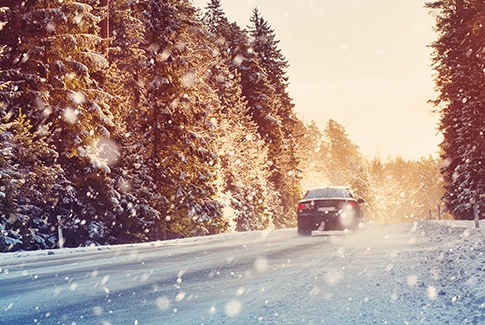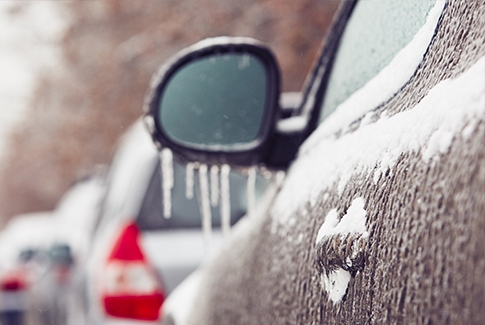A complete guide to winter driving

Winter brings a flurry of driving challenges. Here’s a brief guide to surviving winter with your car and driving safely, whatever the weather.
Winter tires: Follow best practices
When winter arrives, you need good, safe, well-balanced tires. Winter tires are mandatory from December 1 to March 15, but you should have them installed as soon as the average temperature drops below 7°C. If you do so sooner, don’t worry—your tires won’t wear out prematurely. As soon as the leaves begin falling, why not book an appointment at the garage to have your winter tires put on?
Need new tires?
Ideally, all four tires should be the same size and grade to avoid compromising your vehicle’s stability. Apart from that, there are no bad winter tires per se, but some are better suited to a vehicle or driver than others. Go to a specialist for help, such as a CAA-Quebec Approved Auto Repair Services location. They’ll ask the right questions to find the best winter tires for you based on your vehicle, mileage, driving environment (city roads, highways, country roads), driving style, and budget. CAA-Quebec’s Automotive Advisory Services can also help.
Did you know? Winter tires stand up to cold weather better than all-season tires, maintaining flexibility and grip on snow and ice. In addition, winter tires reduce the required braking distance and improve cornering.

Winter maintenance for your vehicle
Preparing your car for winter requires a careful examination of its components. Inspect belts and hoses for bulges, cracks, or leaks that may be aggravated by temperature changes.
Have your headlights seen better days?
Many garages offer a polishing service. The block heater should also be inspected using a device designed for this purpose. Your vehicle’s wiring and power supply must be free of cracks. If you have the slightest doubt or if inspecting your vehicle s something you find daunting, call on a professional. Inspections carried out at a CAA-Quebec Approved Auto Repair Services location are covered by a 12-month or 20,000-kilometre warranty.
Can your battery pass the test?
A friendly tip: Have your battery tested before winter if it’s more than three years old, if your vehicle seems to start more slowly, if your headlights dim when you decelerate, or if the vehicle’s electronics shut off suddenly when you cut the engine. Your radio, GPS, and digital panels draw on the battery when the engine is off. Another little tip: Have your battery checked when your vehicle is serviced or your tires are changed.
CAA-Quebec Battery Service, available in many regions of Quebec, can assess the health of your battery and charging system (starter and alternator) and even replace your battery on the spot if needed. CAA Premium batteries come with a six-year warranty and are designed to withstand the harshest Canadian winter conditions.
Tips for starting your car in cold weather
First, in winter make sure to keep your gas tank at least half full (50%) and avoid idling the engine too long. Instead, start your car gently and gradually. Going easy on the engine will help keep it running smoothly.
Below -15°C, it’s best to use an engine block heater for comfort, safety, and energy savings and efficiency. It will make starting your vehicle easier, and the engine and passenger compartment will warm up faster. You’ll be more comfortable and use less fuel.
At -30°C, even a battery in tip-top condition has only 25% of its maximum energy capacity for starting. Your vehicle’s on-board technology already puts a heavy strain on the battery; add harsh winter temperatures to the mix and this can reduce the average battery life to just four years.
Driving an electric vehicle (EV)? Make sure you have a full charge before your trip and in very cold weather. Preheat the passenger compartment while your EV is still plugged into the charging station to increase its range and your comfort.

Winter emergency kit and roadside assistance
When driving in winter, you should always keep a winter emergency kit in your vehicle because you never know when the unexpected will happen. A CAA-Quebec membership card lets you drive with peace of mind thanks to a full range of services including Roadside Assistance and Battery Assistance.
Winter driving classes for relearning the basics
To keep yourself and others safe, you need to adapt your winter driving to reduce the risk of an accident. Many driving schools offer courses on how to drive better in winter conditions like snow and ice. CAA-Quebec Driving Schools, for example, offer a winter driving course for individuals and businesses. Students practise emergency manoeuvres such as braking and turning on slippery roads, avoiding obstacles, and regaining control during a skid.

Benefit from personalized advice
Do you have questions about gas-powered or electric vehicles, driving, or need recommendations to find an Approved Auto Repair Service?